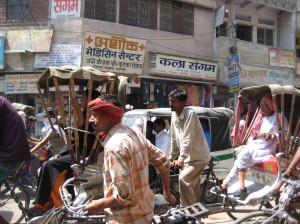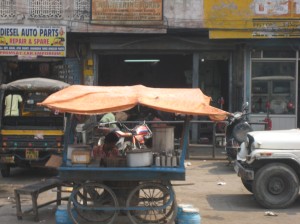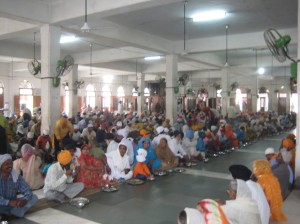There is an article in today’s travel section of the New York Times about street food in India. More specifically, the article deals with the migration of “street food” from the street to more restaurant-like establishments. I have not (yet) been lucky enough to see Mumbai, and although the piece is mostly about that city, I think street food is an universally Indian enough for me to comment.
Apparently, recently “a slew of restaurants are sanitizing street food, serving it in clean (if not always pristine) surroundings. At most places, you can eat like a king for less than $2.” First of all, $2 for Indian street food is a rip-off comparable to a McDonald’s competitor selling Big-Macs for $30. Second, part of what makes street food in India so great is the fact that is on the street.
There will always be those Mumbaikars who tell you that street snacks eaten in restaurants just can’t compare with the authentic fare of “Raju the blind chaatwala at the second open drain behind the Churchgate Railway Station.” They are probably right. There’s something about the down-and-dirtiness of real street fare that makes it all the tastier.

Typical Hot Indian Street (Varanasi)
Like I said, I don’t know about Mumbai, but this is definitely true in other Indian cities, as well. The relatively uninformed traveler doesn’t know about Raju, and doesn’t know where his food stand is. So, in choosing where to eat, a slightly different process takes place. Stage 1: Walking down hot, crowded, smelly Indian street, impossibly trying to take everything in, and avoiding most vendors’ calls to buy their merchandise, not to mention being gored by a stray cow or run over by rickshaw driver. Stage 2: Surprisingly, amongst the heat, humdity and insects, hunger strikes. Stage 3: This depends on the level of familiarity with Indian street food (usually directly correlated with the amount of time spent in India). If familiar with Indian street food- decide on sweet fried food (Jalebi/Emarti/etc) or something only slightly more wholesome (Pakora/Samosa/etc). Stage 4: Pick best looking /smelling food cart. Stage 5: Enjoy.

The Only Way to Drink Chai
It does take somewhat of a “brave tourist to sample the wares from a street vendor who is casually mashing potatoes with his bare and grubby hands, as flies buzz happily around.” That remains, however, the best way to eat your first Samosa, after escaping to a nearby alley when the “tourist bus” (I was the only non-local on the bus) to the Taj Mahal dropped us off at a way-too-expensive restaurant (kickbacks are rampant in the service industry in India).

In Amritsar - Not Street Food, but Still Great
The article “After all, what’s good enough for Anthony Bourdain …” Assuming that someone who travels with an expensive entourage, stays in fancy hotels, and eats at places suggested by Western-knowledgable locals is inherently more adventurous, is wrong. It might be a safer course of action – an upset stomach that starts in Varanasi, continued through the festival of Holi and a 24 rickshaw+train+jeep journey to Darjeeling and only ends after finally adhering to a strict, bland diet is well… an experience.